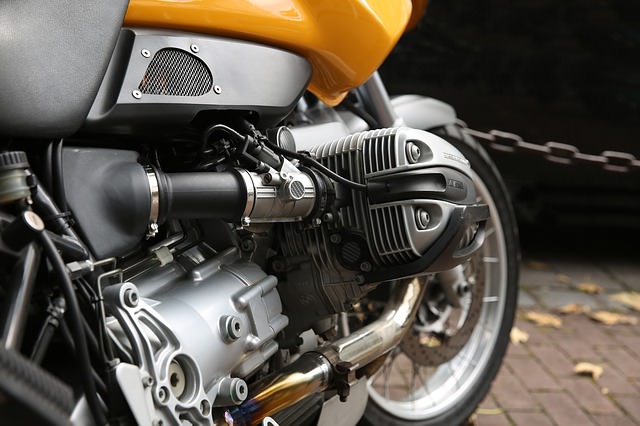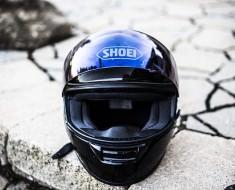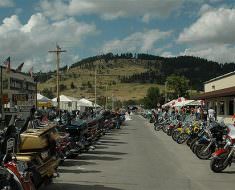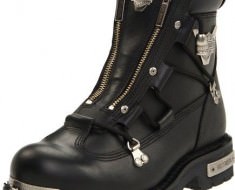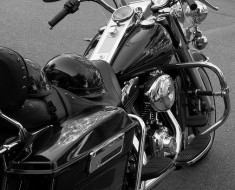If you’re planning on buying a used motorcycle, there are certain things you need to know. A motorcycle is a major buying item: it’s huge, it’s expensive, and it’s something you are going to love, so you need to be sure you’re getting your money’s worth. The tips we’ve prepared could be of value when buying a new motorcycle as well, but you will most certainly find them useful when you decide to go out there and buy a used one.
# Don’t go shopping alone!
Although you might know many things about motorcycles, you should always consider taking a buddy with you when you go looking at used motorcycles. Even if you know everything from the strength of the clutch to never wearing a used helmet, a buddy (especially a buddy who’s well educated on motorcycles) will be of great value for your shopping adventure.
A good friend will assist you in many ways. For example, your buddy you help you hold your horses and stay calm, mask your excitement and think more practically. The buddy won’t be as excited as you, and he/she might see things more clearly. A friend will also (hopefully) not let you buy the first bike you see without some serious quality inspection and a test drive. After all, if there’s one important rule when buying a motorcycle it’s not to buy the first one you see.
# Inspection Time
If you were out buying a house, you wouldn’t buy it without inspecting it first, right? You’d probably search each room, check out each corner, check the pipes, the electricity, and ask a lot of questions so you’d know exactly what you’re paying for. Same goes for buying a pair of shoes, for example. You’d look at them closely, try them on, walk around the store a bit to see if they fit perfectly.
Buying a motorcycle is no different. Although buying a used bike will cost significantly less than buying a home and significantly more than buying a new pair of shoes, all these purchases are important to you and the correlation is clear.


Make a checklist of things you need to look at and ask about before you go out shopping, so you won’t get carried away by your own excitement and forget some of the essentials. For instances, it’s important to check (in no particular order) the brakes, clutch, gas tank, tires, exhaust, and engine. You may believe that checking the mentioned parts are all givens, but without creating a specific list it’s easy to overlook certain parts.
Always take the bike for a test ride, but don’t forget to check it for safety first. You should take all your riding gear with you so you can put everything on quickly, in case the bike is completely ready to be driven.
# Remember: looks can be deceiving
Bring a flashlight! If you have a flashlight on you, you will be able to check the bike for any imperfections, such as dents, scratches, marks, recent paint jobs, signs that the bike was used for racing, etc. In particular, if you find out a bike has been used for racing, you should pass on that one. Severe damage could have been caused and you don’t want to buy a bike that’s not safe. However, if you do decide to purchase a racing bike, make sure the seller lowers the price – DRASTICALLY.
You’ll obviously want to see how smooth or worn out the brakes actually are. You won’t want to ride a motorcycle with bad or deteriorating brakes, but you also won’t want to spend money on new brakes right after purchasing said motorcycle. Testing the brakes is not only a safety issue for yourself, but will also help you determine the seller of the motorcycle—is he genuine and honest? Or is he trying to rip you off? If the brakes or brake pads seem worn or haven’t been changed, then you might want to consider offering a lower price for the bike or requesting that the brakes be changed before a purchase is made.
Checking the strength of the clutch and knowing how many miles are on the motorcycle will be able to tell you what condition the bike is actually in, and if you are getting a quality product. If the bike has over 30 000 miles behind it and the clutch cable hasn’t yet been changed, then you should ask for a lower price, or you could suggest paying the desired price after the clutch cable has been changed.
You might find yourself confused by checking the gas tank of the motorcycle, but there are important factors to consider. First, you need to see if there is rust or dents around the tank. Rust can cause the carburetor to clog. Therefore, if there’s rust, then lower your offer price. Also, be concerned with the lock in the gas cap and the actual gas that is in the tank. If the lock doesn’t seem to be working or isn’t tight, offer a lower price for the bike. It’s also vital to make sure the gas in the machine isn’t old. If it’s old, then it will have to be replaced.
The tires, engine, and exhaust are most likely three factors that you’ve already considered to check, and should be checked impeccably. For instances, worn tires or a faulty engine could result in a crash. You need to know how old the tires are and how many miles have been put on them. Tires are not the place to skip over. You can tell a lot about the tires by looking at them, feeling them, and then asking questions.
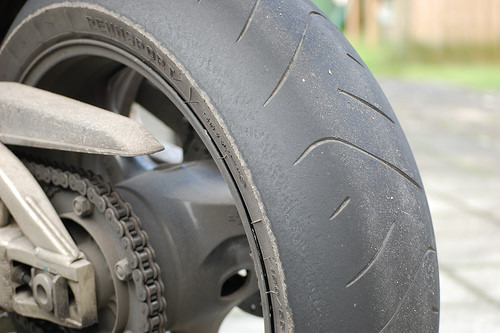

The same idea can be evoked for the engine. Take a look for holes, signs of damage, or bad repairs before ultimately starting up the bike. Listen and note how easily (or difficult) the bike starts up. Does the motorcycle purr like a kitten? Or does the piece smoke like someone who indulges in a pack of cigarettes a day? It’s also important to consider asking the owner to not start the bike before you get there. Why? This idea comes from the fact that the motorcycle might be difficult or take some time to start up. Do you want to spend your hard-earned money on an item you will be struggling to get started?
If you remember one thing when purchasing a used motorcycle, it’s this: it’s perfectly okay to ask lots of questions. You want to be one hundred percent comfortable with your purchase. Therefore, if you’re unsure about something, then ask.
Finally, if you do decide to make a purchase, don’t forget to get all the documents like the owner’s manual, service papers, and warranty info before paying up and leaving with your new motorcycle.
(Source: YouMotorcycle)

